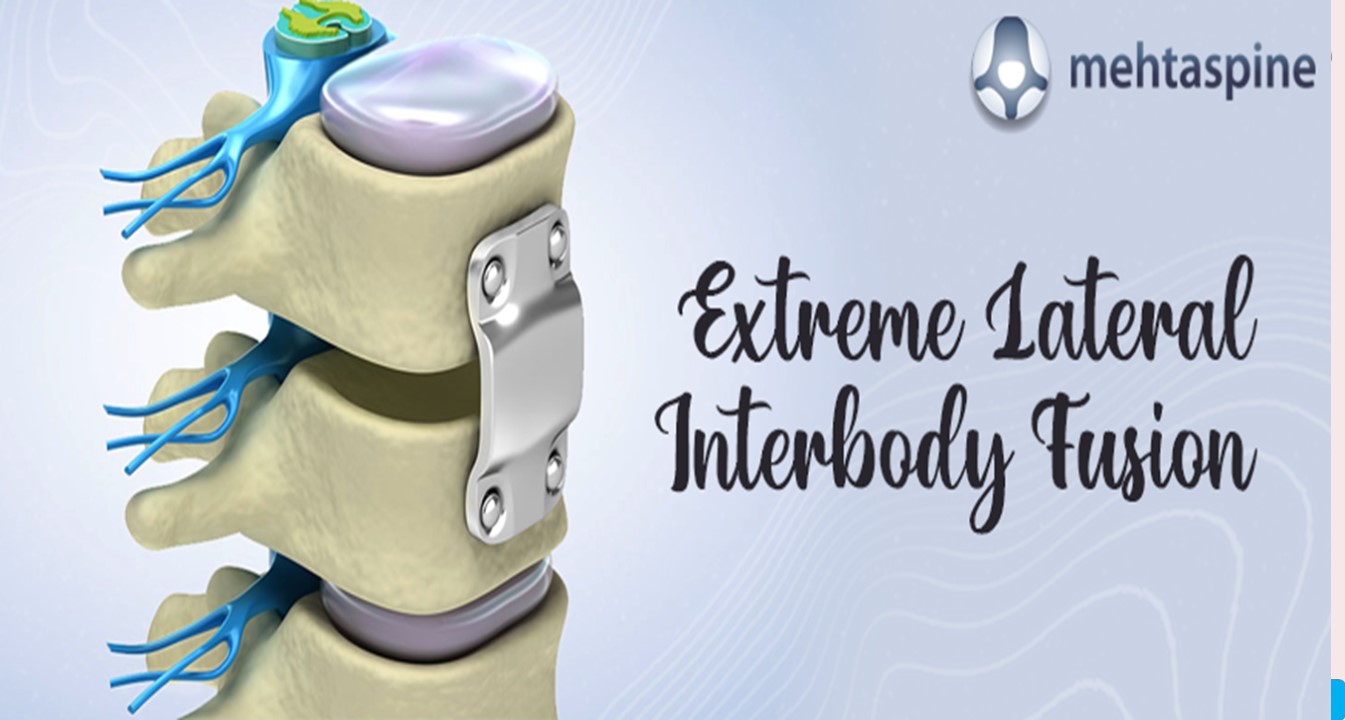Lateral Inter-Body Fusion | Nerve Pain After XLIF Surgery - PowerPoint PPT Presentation
Title:
Lateral Inter-Body Fusion | Nerve Pain After XLIF Surgery
Description:
Traditional extreme lateral interbody fusion is performed along a patient's side for the treatment of a specific spinal disorder. Spinal Deformity Surgeon in UK, Mr. Jwalant S. Mehta gives his input here – PowerPoint PPT presentation
Number of Views:3
Title: Lateral Inter-Body Fusion | Nerve Pain After XLIF Surgery
1
(No Transcript)
2
Extreme Lateral Interbody Fusion
- Extreme Lateral Interbody Fusion commonly known
as XLIF is a medical process which is
traditionally performed along the side of a
patients body in order to treat a specific
disorder that has affected the spine. - Lateral inter body Fusion process also helps
reduce leg and back pain that other methods and
therapies cannot treat. - Comparing the traditional treatment procedure,
XLIF is different the space alongside every
spinal disc is accessed by the surgeon from the
patients side, thus sparing major backbones and
muscles, and ligaments.
3
Extreme Lateral Interbody Fusion
- Among several benefits of XLIF, a few of them
are listed - Lower blood loss Since the process is minimally
invasive, it reduces blood loss and less tissue
disruption. - Reduction in the surgery time The procedure of
XLIF can be concluded in very little time, thus
decreasing the time of exposure of patients
during the surgery in anesthesia. - Quickly getting back to everyday life It is
observed that patients are usually able to start
walking on the day of surgery completion. Even
though full recovery takes a few months, it is
comparatively faster than other traditional
processes. - Less pain Since the patients intervertebral
disc space from the side is accessed by the
surgeon, XLIF does not affect sensitive
backbones, muscles, and ligaments.
4
Extreme Lateral Interbody Fusion
- The surgeon does surgery on the areas close to
nerves on the spinal column in Lateral Inter body
Fusion. To prevent nerve damage, EMG or
electromyography is done. This gives surgeons
real-time information about their instruments
position on the nerve. - XLIF takes almost an hour to complete, and is
performed once anesthesia is given to the
patient. The steps of the surgery are as follows - Once the concerned individual is put to sleep,
they are effectively turned towards their side. A
surgeon will use an X-ray to mark the skin just
above the disc to locate the disk. - A small cut will be made at the back. The surgeon
places their finger through this incision to
protect the peritoneum as the instruments make
their way to the spine.
5
Extreme Lateral Interbody Fusion
- A second incision is also made to give the
instrument a way to remove the herniated disc. - Special instruments such as tubular dilators are
inserted through the muscle. Here, X-rays and EMG
guide the tool and help doctors keep the device
away from the nerve. - A tissue retractor is used once tubular dilators
are placed to lock the surgical table and keep
the small incision open. - An implant is fixed and filled with a bone graft
for fusion into the empty disc space. - Now, the retractor is removed, and the incisions
made are now stitched and closed.
6
Extreme Lateral Interbody Fusion
- Inter body Fusion Overview
- XLIF is less disruptive than traditional surgery
because of this, most patients can walk after the
completion of surgery on the same day. - For more information on XLIF, you can visit the
website of Dr. Jwalant S. Mehta. - He is one of the finest spinal surgeons in UK
who has helped solve multiple health related
issues for thousands of people around the world. - He is excellent at treating back pain in children
and adolescents, therefore is widely considered
as the best spinal deformity surgeon in UK.
7
Contact us
- Royal Orthopaedic Hospital
- BMI The Priory Hospital
- Spire Parkway Hospital
- Bromsgrove Private Clinic
- Birmingham Childrens Hospital
8
Contact and Connect
- Clinical secretary Samantha Leavy 44 785 021
1939 - Medico-legal secretary Jan Clarke 44 121
4508928 - Spire Parkway Hospital 0121 704 5500
- BMI NEC (National Enquiry Centre) 0808 101 0337
- BMI Priory 0121 446 1638
- Email secretary_at_mehtaspine.co.uk
- The appointments are booked through the clinic

